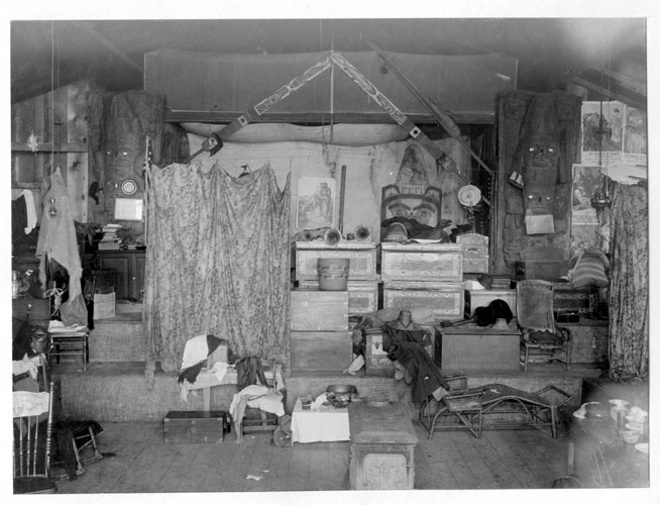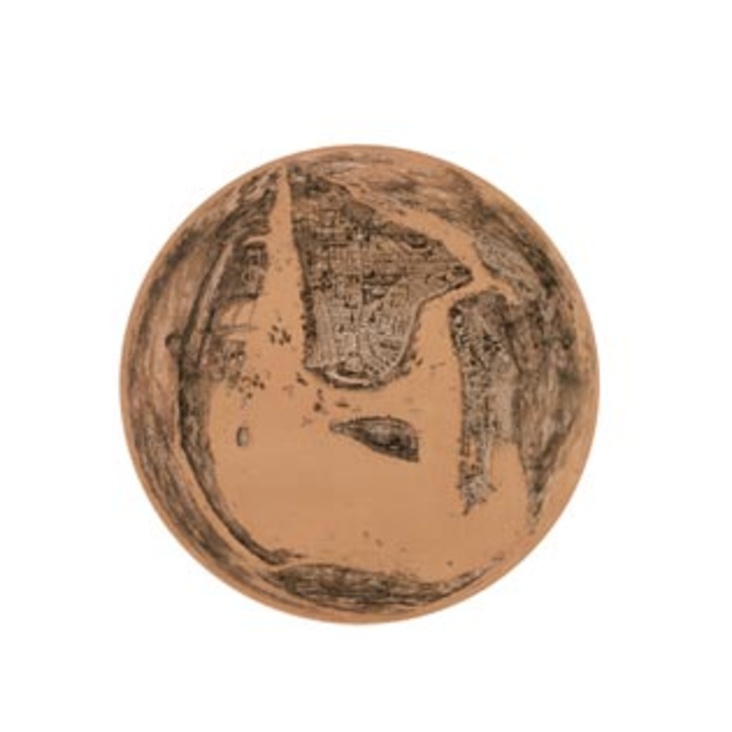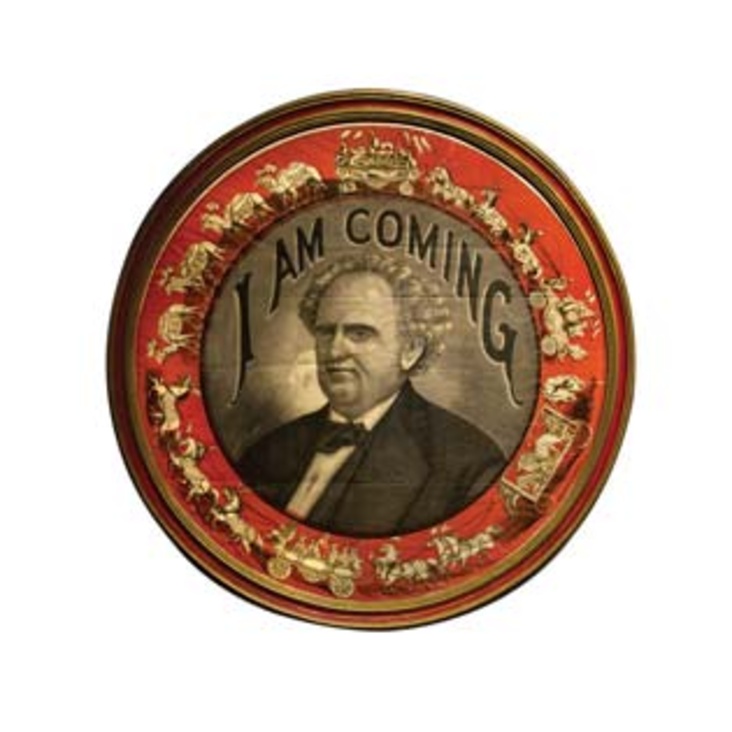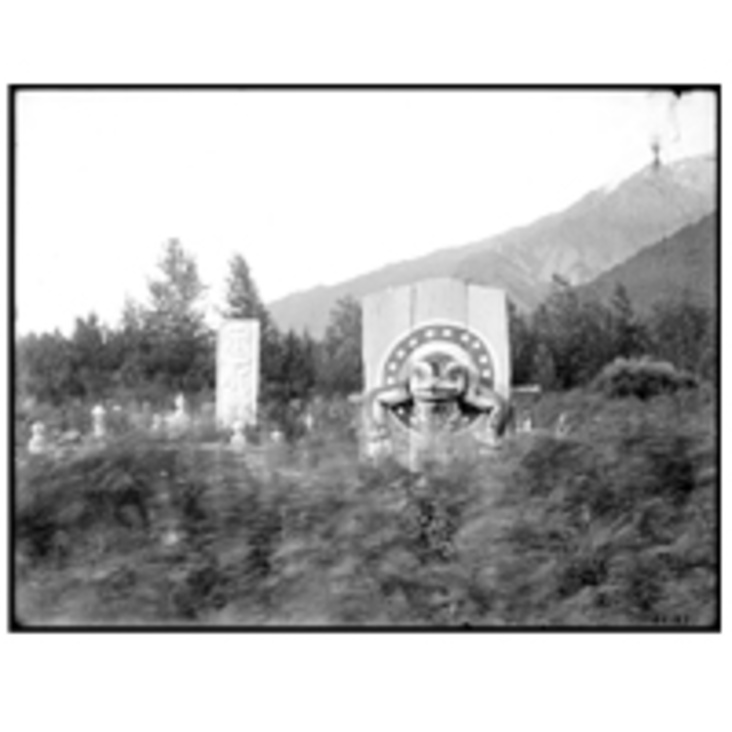
Photograph by Harlan I. Smith, August 8–14, 1909
From a glass plate
Image 46123, American Museum of Natural History Library
This photograph captures the interior of the Chief Shakes house, which had functioned as a symbol of clan identity for the Shakes dynasty since the 1830s. At this time, the house’s contents—foreign trade goods, everyday utilitarian items, and prestigious crest imagery—were arranged by Chief George Shakes VI, who charged fifty cents admission to see his “collection.” While this mixture accurately conveys early twentieth-century intercultural transactions, the assembly was also likely a strategic public representation of different forms of power and property. Shakes may have been enacting an equivalence between his Christianity—evidenced by the evangelical posters on the walls—and items of hereditary prestige like the carved house posts (which were for sale). The medium of photography had been significant for Tlingit nobility for decades as a means of permanently displaying and circulating their wealth and clan affiliations. Both the house-as-museum and its photographic reproduction could be interpreted as powerful—and notably modern—forms of self-display for outsiders as well as for fellow clan and village members.
Click here for a discussion about this object (Lyle Wilson)
Tags for Interactive Tag Cloud: Christianity, Hudson’s Bay Company, indigenization, repurposing, souvenir









